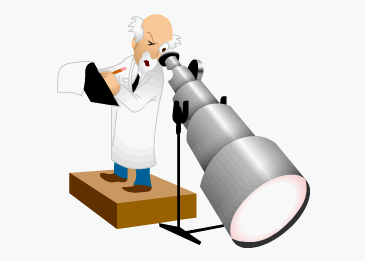Observation means the careful and systematic watching of facts as they occur in course of nature. In the strict sense, observation implies more use of the eyes and the ears than the mouth.
Aspects of Observation
Observation involves three processes, i.e. (i) sensation (ii) attention (iii) perception. Sensation is gained through the sense organs which depend upon the physical alertness of the observer. The sense organs are receptive to stimuli and get attracted leading to the first stage in observation. Then comes attention or concentration which is largely a matter of commitment and will-power. Adequate training and experience can make it almost a matter of habit. The third is perception which comprises the interpretation of sensory reports. Thus, sensation merely reports the facts as observed but perception enables the mind to recognize the facts. Through this process, observation serves the purpose of (i) studying collective behavior and complex social situations; (ii) following up of individual units composing the situations; (iii) understanding the whole and the parts in their interrelation; (iv) getting the out of the way details of the situation. .
Types of Observation Method of Data Collection in Research
There are different types of observation method of data collection in research. The important one’s are listed below:
1. Casual and Scientific Observation
An observation may be either casual or scientific. Casual observation occurs without any previous preparation. It is a matter of chance that the right thing is observed at the right time and in the right place. Scientific observation, on the other hand, is carried out with due preparations and is done with the help of right tools of measurement experienced enumerators and under able guidance. Scientific observations yield thorough and accurate data.
2. Simple and Systematic Observation
An observation may be either Simple or Systematic. Simple Observation. is found in almost all research studies, at least in the initial stages of exploration. Its practice is not very standardized. It befits the heuristic nature of exploratory research. Participant studies are also usually classified as simple observation because participant roles do not permit systematic observation. Systematic observation, on the other hand, employs standardized procedures, training of observers, schedules for recording and other devices to control the observer sometimes even the subject. Clearly some systematization is valuable in research observation, but the situation often limits what can be done. A systematic observation is a scientific observation too.
3. Subjective and Objective Observations
An observation may be either Subjective or Objective. In every act of observation there are two components namely, the object (or what is observed) and the subject (or the observer). It may be that some times one may have to observe one’s own immediate experience. That is called Subjective Observation or Self-Observation or introspection. Prejudices and biases are generally parts of subjective observation. Many data of psychological interest are gathered by the method of subjective observation. To avoid such prejudices, the observer takes stock of him and discovers what prejudices and biases will prevent impartial study and disinterested points of view. Persistent self-observation and criticism by others may ultimately overcome prejudice and biases. Such introspection may have another social value i.e., it sensitizes the observer to the problems of others and creates sympathetic insight which facilitates, at least to some degree, the understanding of people’s behavior in similar circumstances and similar cultural contexts. The net result is impartial subjective observation. When the observer is an entity apart from the thing observed, the observation of this type is objective .
4. Factual and Inferential Observation
Observation may be either factual or inferential In factual observation things or phenomena observed with naked eyes are reported. In inferential observation behavior or psychological aspects are observed.
5. Direct and Indirect Observation
Observation may be either Direct or Indirect. In the case of direct Observation the observer is physically present and personally monitors what takes place. This approach is very flexible of events and behavior as they occur. He is also free to shift places, change the focus of the observation, on concentrate unexpected events if they should occur. In indirect observation recording is done by mechanical, photographic or electronic means. For example a special motion picture camera which takes one frame every second is mounted in a department of a large store to study customer and employee movement.
6. Behavioral and Non-behavioral Observations
Observation may be either behavioral or non-behavioral. As pointed earlier the concept of observation involves not only watching but also listening and reading. Thus, observation includes the full range of monitoring behavioral and non-behavioral activities and conditions. Non-verbal analysis, linguistic analysis, extra-linguistic analysis and spatial analysis are the four major categories of behavioral observational study of persons. Record analysis, physical condition analysis and physical process analysis are the three major categories of non-behavioral study of persons. Non-verbal behavioral observation includes observation of body movement, motor expressions and even exchanged glances. Body movement, is an indicator of interest or boredom, anger or pleasure in a certain environment. Motor expressions such as facial movements can be observed as a sign of emotional studies. For instance, eye-blink rates are studied as indicators of interest in advertising messages. Finally, exchanged glances might be of interest in studies of interpersonal behavior. Linguistic behavior is a second frequently used from of behavioral observation. One simple type, familiar to most students, is the tally of ‘ahs’ (or other annoying words or sounds) that a professor emits during a class.

One thought on “Observation Method of Research Data Collection”